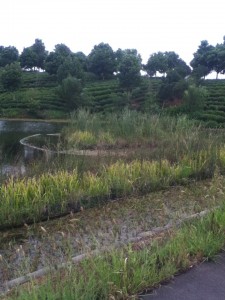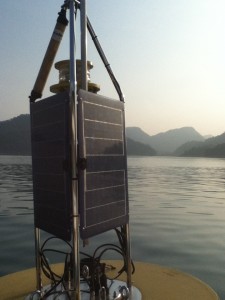During our first-year courses at Bard CEP, we learned about the science-policy gap in the United States and the difficulties that arise when researchers and decision makers need to work together. In the US, if you pay attention to popular media, there is clear lack of faith, and sometimes outright antagonism, regarding scientists within our culture. Since decision makers are often chosen by a democratic electoral system, that mistrust shows up in our local policies and planning. Most of my classmates probably encountered these attitudes from the policy side during their internships, but in my case I got a very different view of it while interning in China at Nanjing Institute for Geography and Limnology (NIGLAS).

Between my time at the institute, visiting lakes for research, and attending conferences for networking, I learned more about the science-policy gap from the research side of things. I saw how scientists focus their research on extremely specific topics, and that they spend much of their time and effort in their research, laboratory testing, and the publication of papers that are so essential to their career’s momentum. These qualities are important for advancing science, but they also contribute to the isolation of scientists from the rest of society. Scientists grow used to being in an environment where their work is understood by their peers. It is not easy for them to translate it to, say, local government officials.
A trigger for dialogue between scientists and decision makers is often, unfortunately, an event such as visible environmental damage in an aquatic ecosystem. In my last blog post I showed pictures of Lake Taihu, which suffers from frequent toxic algal blooms. Scientists have been monitoring it since the 1980s, and both the federal and local Chinese governments have begun pouring large amounts of funding into environmental research in this region. Unfortunately, true collaboration between the local government and the research facility did not begin until May 2007, when a bloom took place earlier than usual and ended up contaminating a major city’s water supply. The scale of the disaster, with 2 million people living on bottled water for about two weeks, pushed the government and NIGLAS to set up a warning system. It is an interesting system where the scientists model algal blooms and predict their occurrence over the following three days. They send out a report of the forecast twice a week to local decision makers and to national leaders who keep tabs on the whole project.
This was the most direct form of communication that I saw between the researchers and decision makers. It became my job, coinciding with work for my thesis, to design an in-person interview that I then conducted with a few of the local officials who were in charge of managing Lake Taihu. I had never designed an interview for research before, and it took a considerable amount of forethought, testing, and input from people at the institute. Once I started requesting interviews, I was surprised at the willing attitudes of the people I interviewed. They were very interested in talking to me, but more interested in giving feedback to send back to NIGLAS. They had never been given this opportunity to personally express what they used the report for and what more they needed. My translator, a PhD student, was even taken aback by the significance one office placed on NIGLAS’s research. In reviewing one of this student’s later papers, I noticed a prominent section about the policy implications for her research and I like to think that maybe I influenced her, and a few others, to think like that.

In much of my research for the internship and my thesis, I saw recommendations for consistent flow of dialogue between scientists and decision makers. At the conferences, I sat in on a few sessions about ecological reconstruction projects and environmental management, and the presenters recommended the same things from their personal experiences and case studies. The firsthand experience, and the reinforcement from hearing these lessons from experienced scientists and managers, helped to deepen my understanding of what it takes to manage environmental issues. It takes dialogue and it also takes understanding and accepting the limitations of current scientific resources. As the groups communicate more, this understanding should come naturally, with the added benefit of helping scientists to improve their skills in communicating their research.
